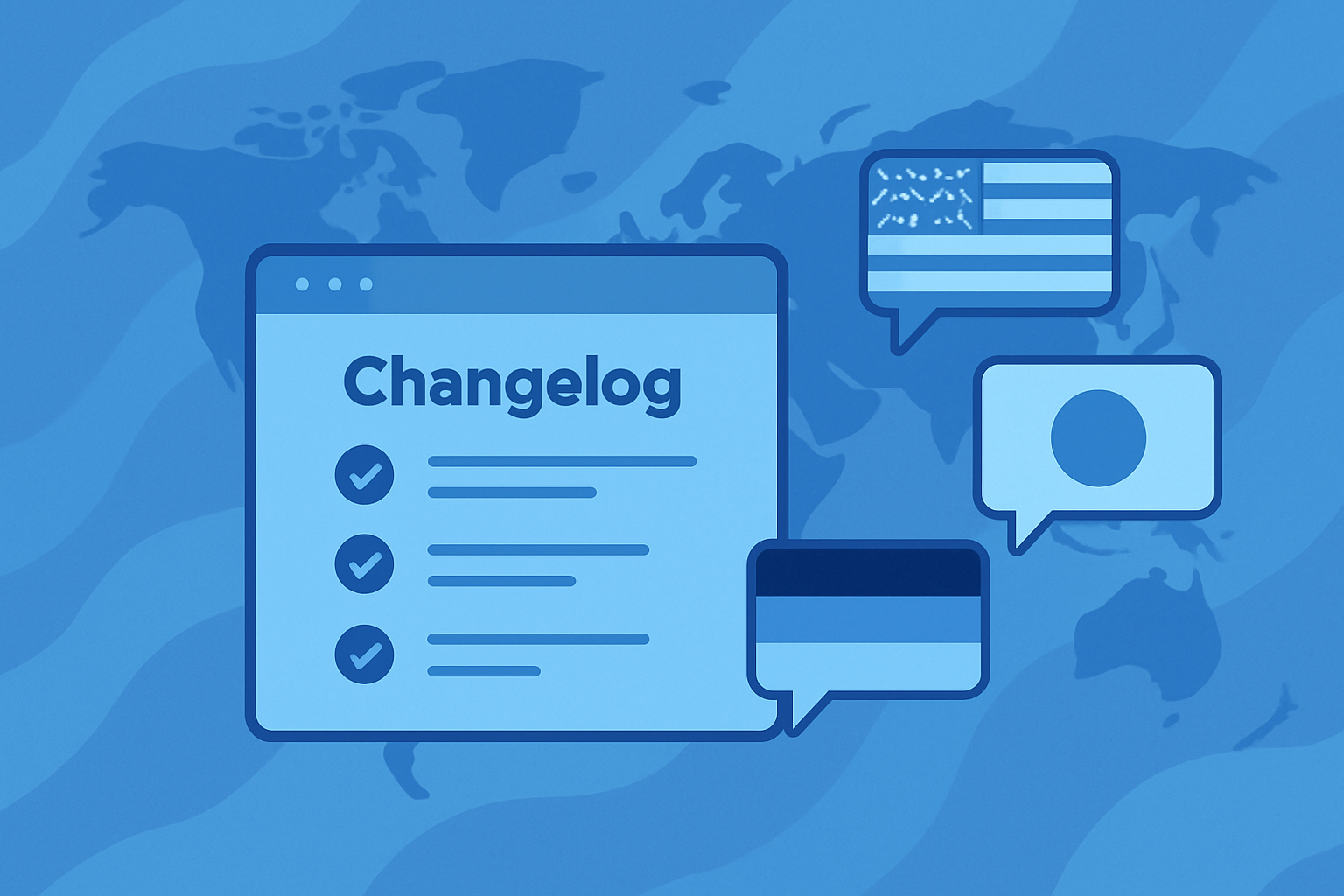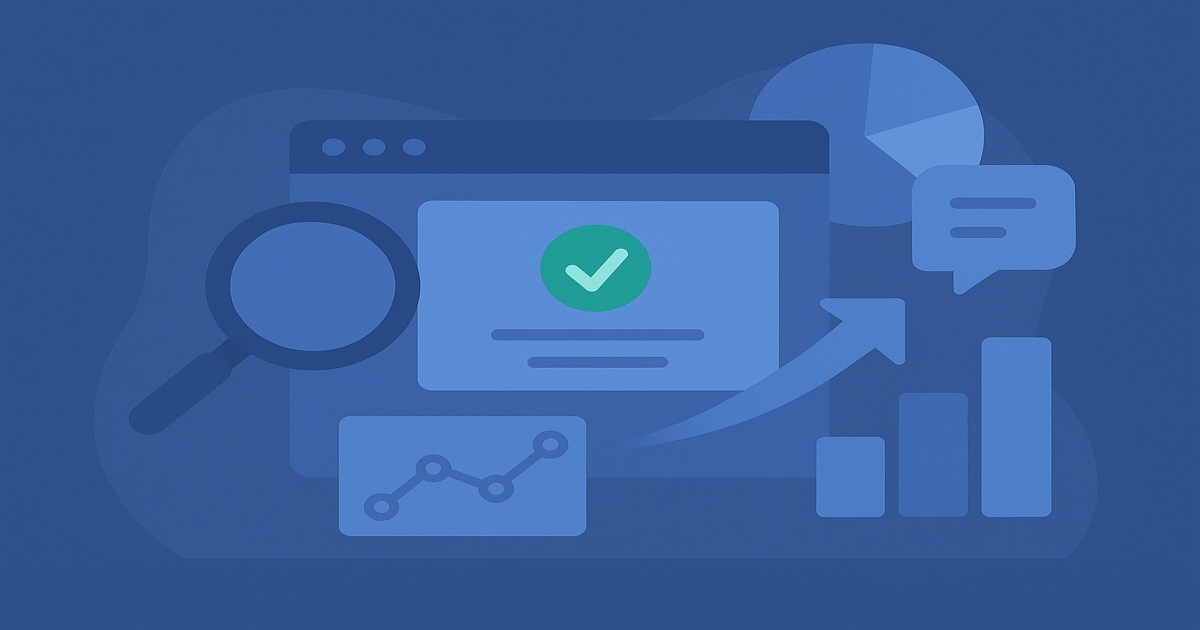Key Takeaways
- A scalable changelog strategy ensures clarity, engagement, and feature adoption across products.
- Use separate changelogs for distinct products and unified changelogs for integrated ones.
- Categories and tags are essential for filtering updates and keeping users informed.
- Enterprise users need detailed, exportable changelogs with clear compliance information.
Managing changelogs for multiple products is no easy feat. Without a clear system, updates can become chaotic, users may feel overwhelmed, and enterprise clients could struggle to find what’s relevant to them. A scalable, well-structured changelog strategy ensures your users stay informed, engaged, and confident in your product’s evolution.
In this guide, we’ll cover actionable strategies to manage changelogs for multi-product organizations, including when to use separate vs. unified changelogs, how to leverage categories/tags, and tips for enterprise customers.
Why Scaling Changelogs Matters
As companies expand their product portfolios, changelogs become a critical communication tool. Here’s why:
The Risks of Poor Changelog Management
- Confused Users: 47% of users ignore changelogs if they don’t find them relevant or easy to navigate.
- Low Feature Adoption: Studies show that new feature adoption rates can drop by up to 30% if updates aren’t properly communicated.
- Enterprise Compliance Issues: For enterprise clients, unclear or incomplete changelogs can cause delays in compliance reporting or system updates.
The Benefits of a Scalable Strategy
- Improved Feature Adoption: Clear changelogs can boost feature adoption rates by up to 25%.
- Better Internal Alignment: Your support, sales, and product teams stay on the same page when updates are structured and accessible.
- Enhanced Cross-Selling Opportunities: Unified changelogs can introduce users to features or products they weren’t aware of, increasing upsell potential.

Separate vs. Unified Changelogs
Separate Changelogs
A separate changelog is ideal when your products serve different audiences or operate independently.
Pros:
- Users only see updates relevant to their product.
- Easier to manage for smaller teams.
Cons:
- Users of multiple products must check several changelogs.
- Maintaining consistency across products can be challenging.
Example Use Case:
A company with distinct SaaS products for accounting and HR management may benefit from separate changelogs to avoid overwhelming users.
Unified Changelogs
A unified changelog works well when your products are integrated or share a common user base.
Pros:
- Provides a single source of truth for all updates.
- Easier to promote cross-product features.
Cons:
- Requires robust filtering/tagging to avoid overwhelming users.
Example Use Case:
A company offering a suite of collaboration tools (e.g., messaging, file sharing, and task management) benefits from a unified changelog to highlight cross-product workflows.
Quick Decision Table
| Factor | Separate Changelog | Unified Changelog |
|---|---|---|
| Product Type | Distinct, unrelated | Integrated, shared base |
| Audience | Unique per product | Overlapping users |
| Complexity | Lower | Higher |
| Cross-Promotion | Limited | Strong |
Use Categories and Tags
Whether you choose separate or unified changelogs, categories and tags are essential for organization and user navigation.
Categories for Broad Grouping
Categories help users navigate changelogs by grouping updates into high-level themes.
Common Categories:
- By Product: Separate updates for each product (e.g., “Product A,” “Product B”).
- By Update Type: New features, bug fixes, or performance improvements.
- By User Persona: Admin-specific updates vs. end-user updates.
Example:
- Product A → New Feature: Advanced analytics dashboard.
- Product B → Bug Fix: Fixed API timeout errors.
Tags for Granular Filtering
Tags allow users to drill down into specific updates.
Common Tags:
- Features: “API,” “Webhooks,” “Integrations.”
- Industries: “Healthcare,” “E-commerce.”
- Update Type: “Security,” “Compliance,” “Performance.”
Pro Tip: Limit tags to 3-5 per update to avoid overwhelming users with options.
Managing Cross-Product Updates
If your products are integrated or share features, cross-product updates are inevitable. Without clarity, these updates can confuse users.
Best Practices for Cross-Product Updates
- Highlight Affected Products: List all impacted products at the top of the update.
- Explain the Context: Show how the update improves workflows across the ecosystem.
- Link to Related Updates: Direct users to detailed changelog entries for each product.
Example:
“API v2.0 is now live! This update impacts Product A, Product B, and Product C. Key highlights:
- Faster response times for all API calls.
- New webhook capabilities for Product B and Product C.
Learn more about API v2.0.”
Enterprise Considerations
Enterprise users rely heavily on changelogs for compliance, reporting, and internal documentation.
What Enterprise Users Expect
- Version Control: Clear version numbers and release dates for every update.
- Detailed Notes: Include what changed, why it changed, and how to adapt.
- Export Options: Allow changelogs to be exported as PDFs or CSVs for internal reporting.
- Security/Compliance Updates: Highlight updates that impact compliance or regulatory requirements.
Pro Tip: Create an “Enterprise Updates” category to ensure these clients can quickly find critical information.

Real-World Example: Scaling Changelogs with SimpleDirect
At SimpleDirect, we manage changelogs for multiple integrated products. Here’s how we do it:
Our Approach
- Unified Changelog: We maintain a single changelog for all products but allow filtering by product, feature, or update type.
- Cross-Linking: For integrated updates, we link directly to related changelog entries for additional context.
- Enterprise-Ready Features: Detailed version control and export options meet enterprise requirements.
Results
- 60% increase in feature adoption across our products.
- 40% reduction in support tickets related to “what’s new” inquiries.
- Positive feedback from enterprise clients on clarity and accessibility.
How to Get Started
Follow these steps to scale your changelog strategy:
- Audit Your Current Changelog: Identify gaps in clarity, structure, and user feedback.
- Choose Separate vs. Unified: Assess your product portfolio and user needs.
- Organize with Categories and Tags: Define 3-5 key categories and relevant tags for filtering.
- Plan for Cross-Product Updates: Standardize how you communicate shared updates.
- Optimize for Enterprise Users: Add features like version control, export options, and compliance notes.





